Table of Contents
- What Gas Do You Use For TIG Welding?
- Argon Gas: The Primary Choice for TIG Welding
- The Role of Helium in TIG Welding
- Importance of Gas Purity
- Gas Selection for Different Materials
- Optimizing Gas Flow Rate
- TIG Welding With Helium
- TIG Welding With Hydrogen
- TIG Welding Gas Blends
- The Best Gas for TIG Welding: Unveiling the Ideal Choice
- Can MIG Gas be Used for TIG Welding? Debunking the Myth
- Argon vs. CO2 for TIG Welding: Deciphering the Conundrum
- The Indispensable Role of Gas in TIG Welding
- What Gas Do You Use For TIG Welding and Mig Welding?
- Conclusion What gas does a tig welder use
- How do I know which gas to use for my TIG welding project?
- Can I use the same gas for all types of metals in TIG welding?
- Is it possible to weld without shielding gas in TIG welding?
- How does gas selection affect the appearance of the weld?
- Are there any safety precautions I should take when working with shielding gases?
When it comes to achieving precise, clean, and high-quality welds, Tungsten Inert Gas (TIG) welding stands out as a preferred choice. This advanced welding technique relies on a non-consumable tungsten electrode to create the weld, making it ideal for intricate work, thin materials, and critical applications.
One crucial aspect of TIG welding is selecting the right gas to create a protective environment around the weld area. In this comprehensive guide, we’ll delve into the intricacies of choosing the appropriate gas for TIG welding, ensuring your welding projects are successful and efficient.
What Gas Do You Use For TIG Welding?
TIG welding involves the use of an inert gas or a gas mixture to shield the weld pool from atmospheric contaminants. The choice of gas significantly impacts the quality and properties of the weld, making it essential to choose the right gas for your specific project.
Argon Gas: The Primary Choice for TIG Welding
Argon gas is the most commonly used shielding gas in TIG welding. It offers excellent protection for the weld pool by preventing oxidation and other unwanted reactions that could compromise the weld’s integrity. The inert nature of argon makes it suitable for welding various materials, including stainless steel, aluminum, and titanium.
Using pure argon is preferred for materials like stainless steel and aluminum, while a helium-argon mixture can be advantageous for thicker materials due to its higher heat input. The combination of argon and helium provides deeper penetration, making it suitable for applications where weld strength is crucial.
The Role of Helium in TIG Welding
Helium, with its high thermal conductivity, can be mixed with argon to enhance heat input and penetration. While pure helium is rarely used due to its high heat intensity, blending it with argon can offer benefits like faster welding speeds and improved arc stability. This makes helium-argon mixtures valuable for thick materials, such as in the aerospace and automotive industries.
Importance of Gas Purity
Whether you’re using argon, helium, or a mixture of both, gas purity is of paramount importance. Contaminants in the shielding gas can lead to porous, weak welds and compromise the overall weld quality. Ensuring you’re using high-purity gas from reputable suppliers is a critical step in TIG welding success.
Gas Selection for Different Materials
Different materials require specific gas selections to achieve optimal results. Let’s explore the ideal gas choices for some common welding applications:
1. Stainless Steel Welding
For stainless steel welding, pure argon is the preferred choice. Its ability to provide excellent shielding without reacting with the metal ensures clean, corrosion-resistant welds.
2. Aluminum Welding
Pure argon or an argon-helium mixture is commonly used for aluminum welding. The choice depends on the material thickness and desired penetration.
3. Carbon Steel Welding
When welding carbon steel, an argon-CO2 mixture is often employed. The carbon dioxide enhances arc stability and helps prevent oxidation.
Optimizing Gas Flow Rate
Apart from selecting the right gas, controlling the gas flow rate is crucial. Insufficient gas flow can lead to inadequate shielding, resulting in weld defects. On the other hand, excessive flow can lead to wastage and turbulence. Following manufacturer recommendations for gas flow rates based on welding current and electrode diameter is essential.
TIG Welding With Helium
Helium, the lighter-than-air gas known for making balloons float, also finds its place in the realm of TIG welding. Helium’s low density and high thermal conductivity make it an excellent choice for applications that require high heat input. When mixed with argon, helium can enhance the heat-affected zone, allowing for deeper penetration and faster welding speeds.
Welding thicker materials becomes more manageable with a helium-argon mixture, as the increased heat input can prevent excessive cracking and improve overall weld quality. While helium can be more expensive than other gases, its unique properties can be a game-changer for specific welding scenarios.
TIG Welding With Hydrogen
Hydrogen might not be the first gas that comes to mind for TIG welding, but it has its own set of advantages. Hydrogen can be added in small amounts to argon or helium mixtures to achieve specific outcomes. It is particularly useful for welding reactive metals like titanium, as it effectively removes oxides and enhances bead appearance.
The addition of hydrogen can also elevate welding speed and control, making it a preferred choice for certain applications. However, it’s crucial to note that hydrogen can also be highly flammable, so proper safety precautions must be taken when using hydrogen-based mixtures.
TIG Welding Gas Blends
In some cases, a one-size-fits-all approach doesn’t cut it. This is where TIG welding gas blends come into play. These blends combine different gases in specific ratios to achieve a balance of properties that cater to unique welding requirements. For instance, a blend of argon, helium, and hydrogen can be tailored to provide optimal results for welding specific alloys or thicknesses.
Gas blends offer the advantage of versatility, allowing welders to adapt to various materials and scenarios without switching gases entirely. Customizable gas blends empower welders with the flexibility to fine-tune their processes for exceptional outcomes.
The Best Gas for TIG Welding: Unveiling the Ideal Choice
When it comes to TIG welding, the spotlight is often on argon gas. Argon, being an inert gas, provides an environment devoid of reactivity that is conducive to producing pristine welds. Its ability to shield the weld pool effectively from atmospheric contaminants is unparalleled. The stability and consistency of argon make it the preferred choice for TIG welding across a spectrum of materials, from stainless steel to aluminum.
Can MIG Gas be Used for TIG Welding? Debunking the Myth
MIG and TIG welding differ in their techniques and requirements. While MIG welding employs a consumable electrode and a continuously fed wire, TIG welding involves a non-consumable tungsten electrode and a separate filler material, if needed. This fundamental difference extends to the gases used as well. MIG gas, a mix of argon and CO2 or other components, is not ideal for TIG welding. The unique demands of TIG welding, including the need for precise control and a non-reactive environment, necessitate the use of pure argon gas.
Argon vs. CO2 for TIG Welding: Deciphering the Conundrum
Argon stands tall as the go-to gas for TIG welding, but what about CO2? While CO2 is commonly used in MIG welding for its reactive properties, it falls short in TIG welding. TIG welding demands a stable and non-reactive atmosphere to prevent oxidation and other flaws. Argon, with its inert nature, maintains a consistent shielding effect, resulting in clean, high-quality welds. CO2, on the other hand, introduces reactivity that can compromise the weld integrity.
The Indispensable Role of Gas in TIG Welding
The question often arises: Do I need gas for TIG welding? The unequivocal answer is yes. Gas is an essential component of TIG welding as it creates a protective shield around the weld area, preventing it from interacting with ambient air. This shielding effect ensures that the weld remains free from defects and maintains its structural integrity. Without the appropriate gas, the risk of contamination, porosity, and weakened welds significantly increases.
What Gas Do You Use For TIG Welding and Mig Welding?
Conclusion What gas does a tig welder use
In the realm of TIG welding, the choice of shielding gas holds the key to achieving impeccable welds that meet the highest standards. Whether you’re working with stainless steel, aluminum, or carbon steel, understanding the nuances of gas selection is paramount. By considering factors like material type, thickness, and desired weld characteristics, you can ensure your TIG welding projects result in strong, durable, and visually appealing welds.
Remember, the world of welding is vast and ever-evolving. As technologies and techniques continue to advance, staying informed and seeking guidance from experts will empower you to tackle even the most complex welding challenges with confidence.
FAQs about what gas to use for tig welding
How do I know which gas to use for my TIG welding project?
Gas selection depends on factors like the material you’re welding, its thickness, and the desired weld characteristics. Consult welding charts or seek advice from experienced welders for guidance.
Can I use the same gas for all types of metals in TIG welding?
No, different metals require different gases or gas mixtures. Stainless steel, aluminum, and carbon steel, for instance, each have their recommended shielding gases.
Is it possible to weld without shielding gas in TIG welding?
While it’s technically possible, welding without shielding gas can lead to poor-quality welds due to oxidation and contamination from the atmosphere.
How does gas selection affect the appearance of the weld?
The right gas selection contributes to a clean, smooth weld appearance with minimal discoloration or porosity.
Are there any safety precautions I should take when working with shielding gases?
Yes, always ensure proper ventilation and gas leak detection when using shielding gases. Avoid inhaling the gases, and store them in well-ventilated areas.
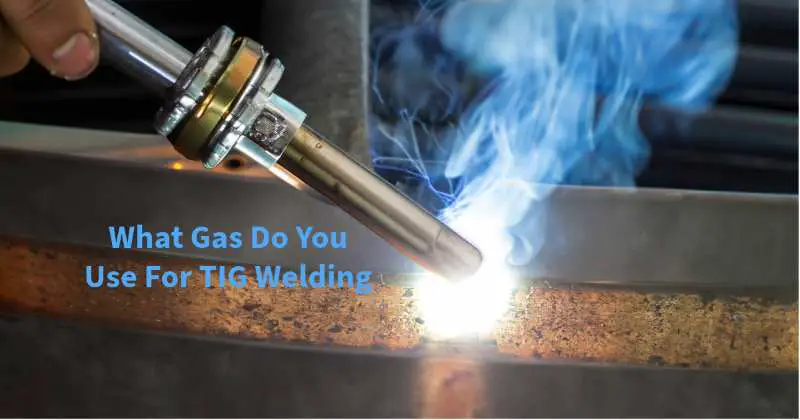
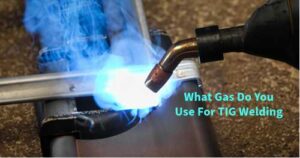
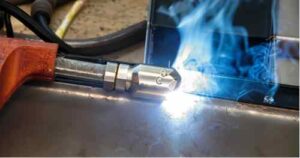
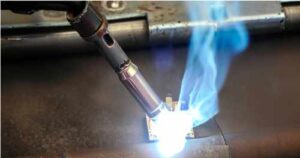

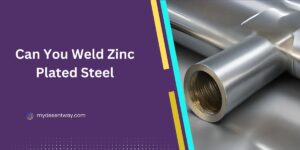






5 thoughts on “TIG Welding Gas Guide: Optimize Your Welds Now!”